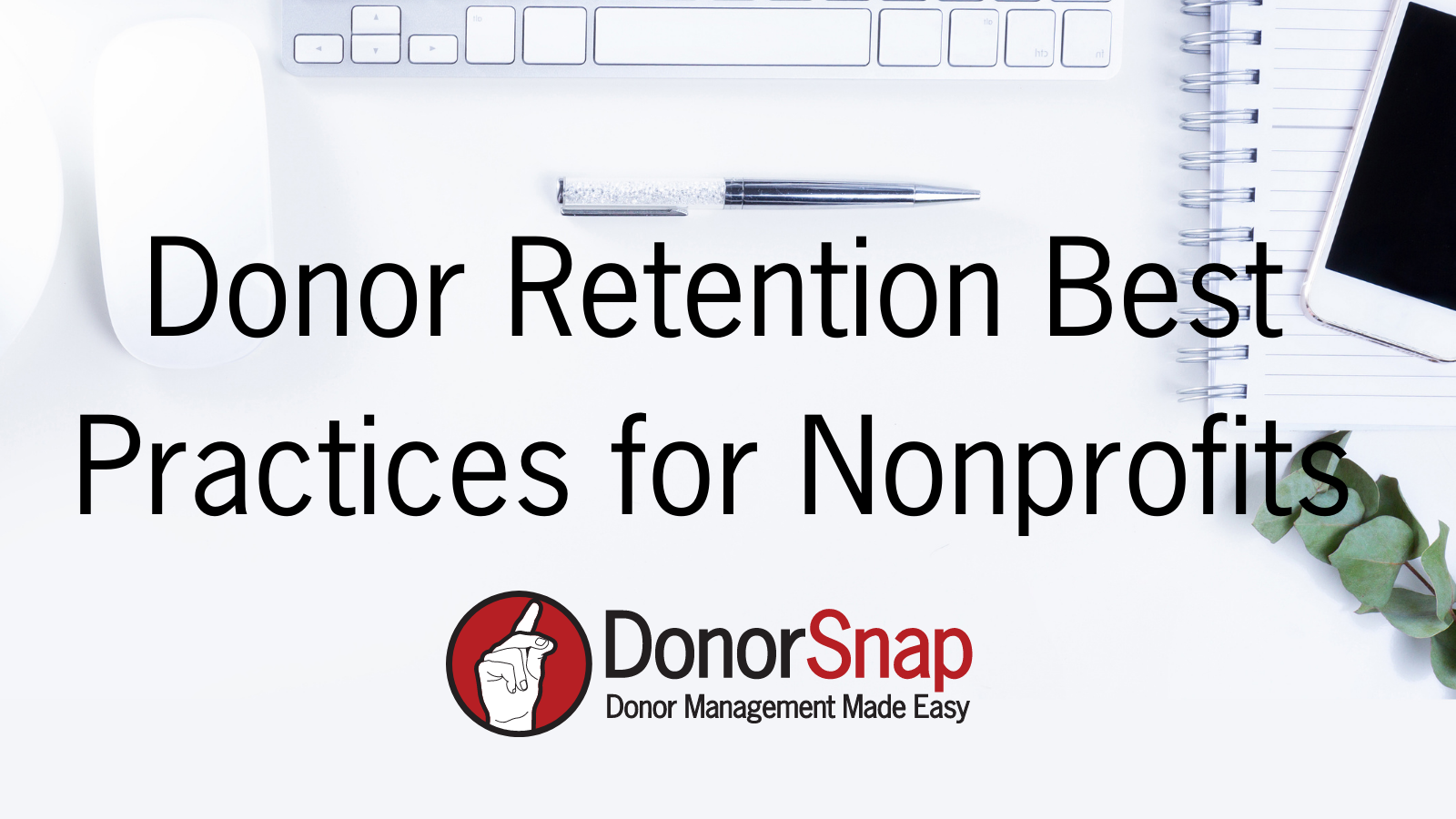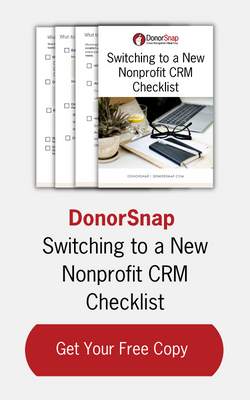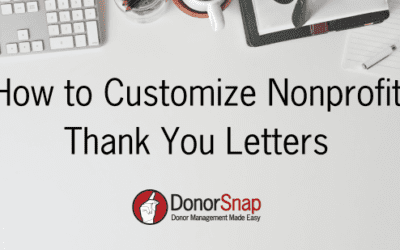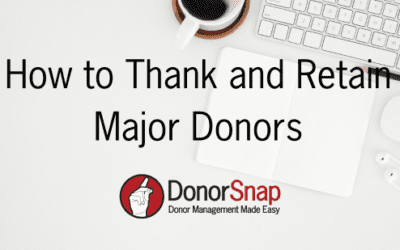Is Donor Retention an active part of your nonprofit’s fundraising strategy? If not, investing time and resources on donor retention will have a positive impact on the financial health of your organization. It costs more money to bring in a new donor than to keep a current one. So it is worth your organization’s time to develop a plan for donor retention.
What is Donor Retention?
Donor retention is the act of engaging and nurturing current donors so that they continue to support your organization year after year. Every nonprofit organization should keep track of its donor retention rate and have a plan in place to retain current donors.
How Do You Calculate Donor Retention?
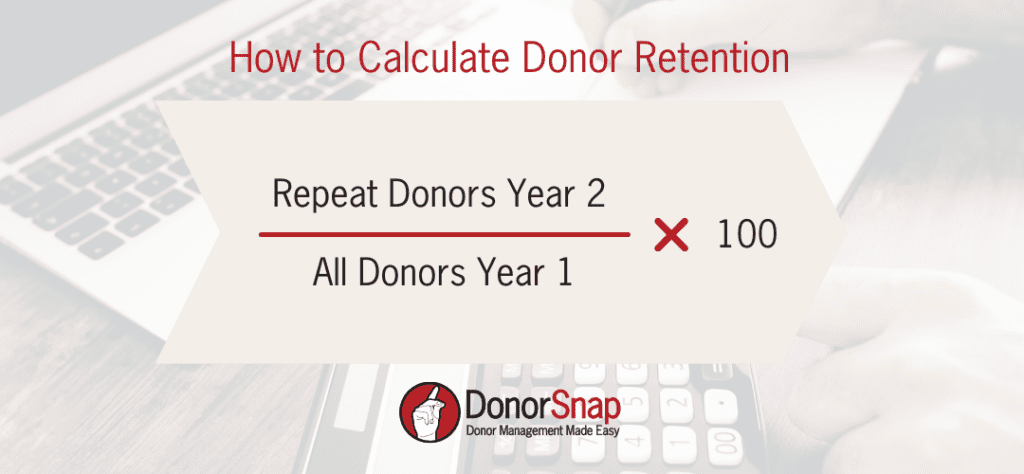
Donor retention is calculated by taking the number of repeat donors this year and dividing it by the number of last year’s donors and multiplying it by 100. For example, if 500 people gave to your organization last year and 200 of those same people gave again this year, your retention rate would be 200/500*100 or 40%.
How to Track Donor Retention in DonorSnap
If you are using DonorSnap, you won’t need to do the math manually. You can simply add the Donor Retention app to your dashboard. This will give you a quick snapshot of where you are in terms of donor retention up to the current date in the year. But keep in mind, your actual donor retention rate won’t be final until the end of the year.
Why is Donor Retention Important?
There are a number of reasons having repeat donors is beneficial to the health of your organization. For one thing, the cost to incur a new donor is higher than that to retain the ones you already have. Also, as people continue to support your organization they are likely to increase their giving amount. Long-term donors also have the potential to become legacy donors.
In addition, the longer someone supports your organization the more connected they become to your cause. Repeat donors will likely be champions for your cause and will help spread your message via word of mouth.
Reasons Donors Leave Your Organization
Donor attrition is unavoidable in certain instances. However, there are reasons donors leave your organization that are preventable. Reasons that are out of your control are if the donor can no longer afford to keep giving. On the other hand, the following reasons people stop donating to your organization can be prevented:
- Solicited too often for a donation without being shown the impact of their last one
- No longer feel connected to the organization
- Feel that other organizations are more deserving
- Not thanked enough
- Poor communication/customer service from the organization
Donor Retention Best Practices for Nonprofits
To prevent donor attrition, there are a number of things your nonprofit can do. The following best practices will help you improve your donor retention over time:
- Donor Retention Should be Tracked All Year Long
- Segment your current donors by First Time Donors, Repeat Donors, and Recurring Donors
- Develop a Strong Plan for Stewarding Your First Time Donors
- Retain Repeat Donors Through Personalization
- Set Up a Successful Recurring Giving Program
- Deliver Impact and Thank Your Donors Regularly
Donor Retention Rate Should be Tracked All Year Long
At the beginning of each year, you should check to see what your donor retention rate was in the previous year. Currently, the average donor retention rate is about 43%. Check to see where you stand and use 43% as a benchmark. From here, you can get an overall picture of how effective your strategies have been in retaining existing donors.
Beyond checking your retention rate for the previous year, you should keep an eye on your donor retention rate on a monthly or quarterly basis. With DonorSnap’s dashboard app you can see your donor retention rate at any given point in the year. From here, check and see where your retention rate was at the same time last year. Tracking this will help you spot any major shifts in donor retention. It will also help you prevent any unwanted surprises at the end of the year.
Segment Your Current Donors by First Time Donors, Repeat Donors, and Recurring Donors

Source: The Nonprofit Recurring Giving Benchmark Report by NextAfter
All donors are not created equal and it is important to have a different strategy for each segment. With the power of a good CRM like DonorSnap, you can easily segment your donors. When it comes to donor retention you should use segmentation for a number of strategies, but one, in particular, is segmenting them by first-time donors, repeat donors, and recurring donors. Having these different segments will help you strategically communicate with each group. In the next few sections, we will cover the specifics of each segment.
Develop a Strong Plan for Stewarding Your First Time Donors
According to NextAfter, first-time donors have a retention rate of about 20%. Because so many of these donors drop off, it is important to develop a strong plan for stewarding your donors. To start, think about how you can make someone feel welcome to your organization.
This could include sending a welcome email series or a welcome packet. (Pro tip: Use DonorSnap’s Automated Task Manager to set up a welcome email series. Using automation will ensure you are consistently reaching out to new donors.)
A handwritten note can also go a long way when welcoming someone new to your organization. Recruit members of your board or staff to sit down quarterly and write handwritten notes to all of your new donors in that time period.
If you are more strapped for time, another way to welcome new donors is to give them a shout-out in your monthly or quarterly newsletters.
Retain Repeat Donors Through Personalization
If someone gives to your organization a second time you can expect up to a 60% retention rate. At this point, you have sold them on your cause and given them enough reason to come back and support you again. However, that doesn’t mean you should stop nurturing these donors.
A great way to keep repeat donors engaged is through personalization. According to nonprofit times, approximately 71 percent of donors feel more engaged with a nonprofit when they receive content that’s personalized. Personalization can be as simple as including your donor’s first name in an email. You could also survey donors to ask what their contact preferences are and only communicate with them through those channels. If a donor is a volunteer make sure you recognize that as well in your thank you letters.
One thing that should not be overlooked with current donors is if they increase their giving amount. Your nonprofit should have a system in place for identifying donors who have increased their giving level and thanking them specifically for it. In DonorSnap you can run the Comparative Donation Report by Donor for a quick glance at changes in giving over two time periods.
Set Up a Successful Monthly Giving Program
Beyond just adding recurring giving to your donation forms, your nonprofit should invest time in building and branding a successful monthly giving program. You should consider building a dedicated landing page on your website highlighting your monthly giving program. Some things you should include on your monthly giving page would be:
- The name of your monthly giving program (you can get creative here)
- FAQs including when the donor’s credit card will be charged and how they can cancel or make changes to their donation
- Visuals that outline the impact of gifts at giving levels
- Your donation form with the default frequency set to monthly
To learn more about setting up a successful monthly giving program, read our blog post: 8 Steps to Setting up a Monthly Giving Program.
Deliver Impact and Thank Your Donors Often
Most donors stop giving because nonprofits fail to deliver impact. You know how far someone’s donation goes, but are you able to articulate that in a powerful way? Storytelling is a great tool when it comes to delivering impact. Donors love specifics, so the more detailed you can get in your impact stories the better.
You should think of creative ways to communicate thanks to your audience and show impact throughout the year. This is just as important as your year-end ask. Think about all the ways your donors have helped your organization throughout the year and share those messages through social media, email, and in your newsletters.
What to do About Lapsed Donors?
Unfortunately, donor attrition will happen. But your nonprofit should have a plan in place for dealing with lapsed donors. Even if you can’t win them back, finding out why they left can be beneficial to your organization. Consider setting up an automated campaign that surveys lapsed donors 18 months after their last donation. This survey data can help give you key insights into how you can prevent lapsed donors in the future.
Also, some lapsed donors do have the potential to return. Take a look at who your lapsed donors are by using a LYBUNT report. From here you can develop a re-engagement campaign where it fits certain donors and try to win them back.
To learn more about LYBUNT and lapsed donor campaigns, read our article, LYBUNT & SYBUNT: 3 Steps to Re-Engage Lapsed Donors.
Final Thoughts
Donor Retention involves thoughtful nurturing of donors based on how long they have been supporting your organization. Nonprofits can benefit from tracking their donor retention rate and segmenting their donors by first-time donors, repeat, or recurring donors.
First-time donors have the highest risk of attrition so developing a plan to warmly welcome them to your organization will go a long way. Repeat donors are not guaranteed to stay so nonprofits should leverage their CRM data to provide customized experiences and personalized communications.
Recurring donors have the highest retention rates. Beyond adding giving frequency to their donation forms, nonprofits should build and brand a recurring giving program that will entice donors to give monthly.
